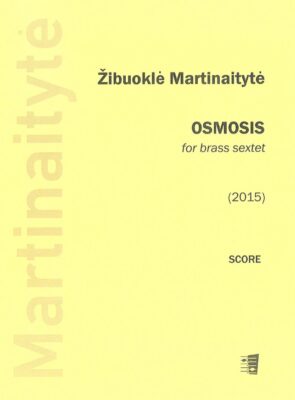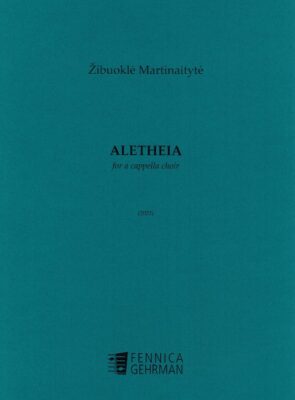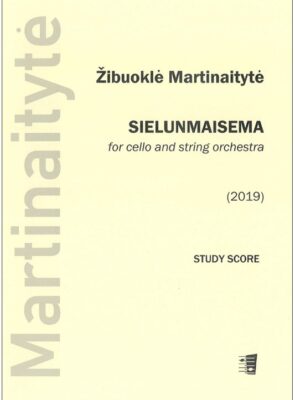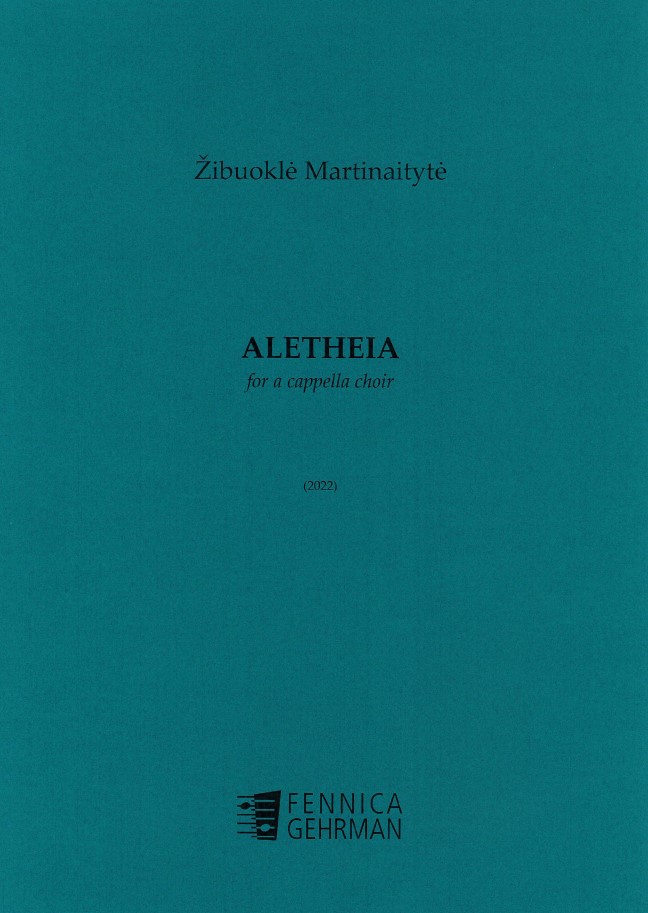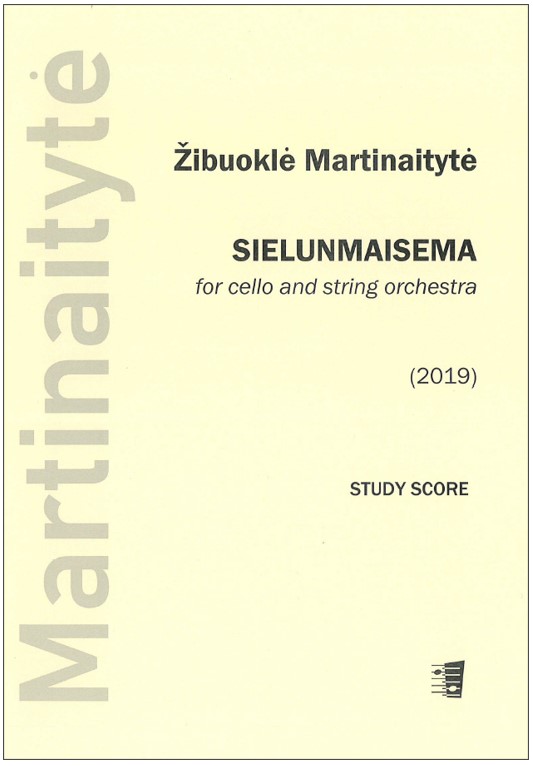
Martinaitytė, Žibuoklė
The works of New York -based Lithuanian composer Zibuokle Martinaityte (b. 1973) have been lauded as breathtaking and profoundly moving. Her stimulating music bristles with energy and tension and revolves often around the subject of beauty, which she calls both a guiding principle and an aesthetic measure for sonic quality. To her being a composer means not only using one’s brain, but also not forgetting about one’s heart.
Martinaitytė studied composition at the Lithuanian Music Academy and took part in various composition workshops and courses in Europe studying with Brian Ferneyhough, Boguslaw Schaffer, Magnus Lindberg, Tristan Murail and Jonathan Harvey. In 2001 she was granted her first creative residency at Künstlerhaus Lukas der Stiftung Kulturfonds, Germany.
Although she began her career in Europe, the last decade of her activity has been gaining momentum in the USA where she received commissions from the MATA festival, the Barlow Endowment, Look+Listen Festival, Volti, Bang On A Can Marathon and others. She has received numerous awards such as the Look+Listen Composers Competition Prize (NYC), the Copland House Sylvia Goldstein award and the Composers Now award for residency at the Pocantico Center. In 2020 she was granted the Guggenheim Fellowship and the prestigious Lithuanian Government Award for her creative achievements.
Described as a textural magician, Martinaitytė has a growing reputation for her chamber and orchestral music. In 2021 Ondine Records released the CD “Saudade” which includes three works for symphony orchestra: Saudade, Millefleur and Horizons and the Chiaroscuro Trilogy for piano and string orchestra. The album has gained wide critical acclaim with reviews in the New York Times, Gramophone Magazine, BBC Music Magazine and Limelight Magazine. The Stereophile Magazine did not either spare its praise and chose it as the Recording of April 2021. Martinaitytė’s previous solo CD “In Search of Lost Beauty”, released in 2019, received two gold medals at the Global Music Awards (Best Composer and Best Album). The latest Ondine disc“Ex Tenebris Lux” includes three works for string orchestra: Nunc fluens. Nunc stans, Ex Tenebris Lux and Sielunmaisema (Soul-landscape). The CD was a five-star Editor’s Choice in Limelight Magazine, which wrote: “Martinaitytė wows with new works for string orchestra. This is extraordinary music with a harmonic language all her own: powerful, minimal while immense and unutterably beautiful.”
Her latest commission is a work for violin and string orchestra, initiated by Hugo Ticciati and co-commissioned by three orchestras from different countries: the Ostrobothnian Chamber Orchestra, O/Modernt and Lithuanian National Philharmonic. The world premiere is scheduled on 8. March 2023 in Kokkola, Finland.
Chiaroscuro Trilogy
(2017)
for piano and string orchestra
str (min. 44442, preferably doubled)
Duration: 18
Ex tenebris lux
(2021)
for string orchestra
str(min.44442) The amount of strings can be expanded by doubling each part, especially cellos and double basses.
Duration: 25
Horizons
(2013)
for symphony orchestra
3(I+afl,III=picc)23(III=bcl)3(III=cfg)-4331-03-hp-pf-str Percussion 1: Timpani, Crotales (on the stand), Tubular Bells, Triangle 2: Snare Drum, Bass Drum, Suspended Cymbal (large), Sizzle cymbal 3: 3 Roto-toms (or Tom-toms), Gong (large, preferably sounding H)
Duration: 17
Millefleur
(2018)
for symphony orchestra
2(I+picc)222(II=cfg)-4331-02-str Percussion I: 3 Tom-toms, 2 Suspended cymbals (high & medium), Tamtam, Xylophone (or Marimba), Triangle (on a stand), Woodblock (high-pitched, close to F, E or B) Percussion II: Bass drum, Gong (large, low sounding, appr. pitch B or E), Vibraphone (with bass or cello bow)
Duration: 13
Nunc fluens. Nunc stans.
(The now that passes. The now that remains.) (2020)
for percussion and string orchestra
perc-str(min.22222, pref.44444 or larger) Percussion (solo): Suspended cymbal (low), 4 Tuned gongs* (D, E, B, C), Crotales, Vibraphone, 1 Tubular bell (D) * In case no low register Gongs are available, they can be replaced by the same pitches in another octave. The lowest gong can be replaced by Tamtam. If no pitched gongs are available at all, the performer can look for creative solutions replacing them with other metal resonating instruments such as various singing bowls etc. It is important to preserve the relative pitch relationships (high vs. low) and to look for somewhat similar pitches (D, E, B, C).
Duration: 16
Saudade
(2019)
for symphony orchestra
223(III=bcl)3(III=cfg)-4331-12(or3)-hp-str Percussion (2-3 players): Snare drum, Bass drum, 2 Suspended cymbals (large & medium), Gong (large, pitched d or f), Vibraphone, Tubular bells (E & F)
Duration: 17
Sielunmaisema
"Soul-landscape" (2019)
for violoncello and string orchestra
vc-str(min.66441)
Duration: 33
Listen to Martinaityte’s audio interview (New Sounds)
See the Saudade-CD presentation (Ondine Records/YouTube)
Charoscuro Trilogy (Tunnel)
Lithuanian National Symphony Orchestra, cond. Giedrė Šlekytė (Ondine Records)
Sielunmaisema (Soul-landscape)
Saudade
Horizons
Millefleur (Thousand Flowers)
Chiaroscuro Trilogy for piano and string orchestra

